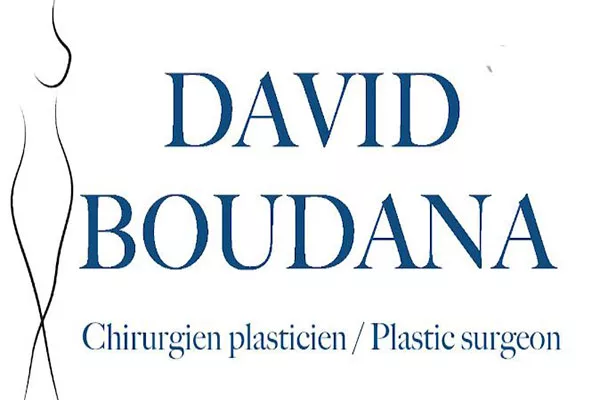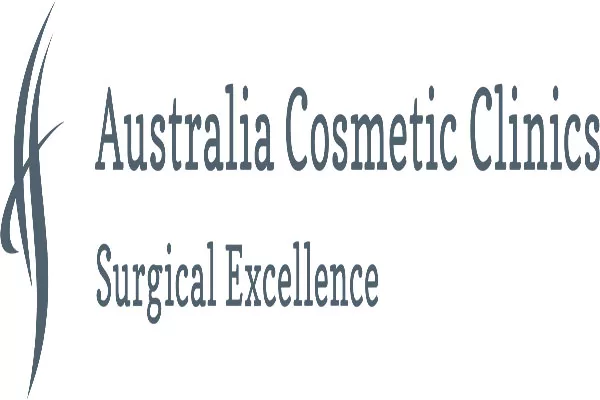Introduction
Breast surgery has become increasingly popular in recent years, with millions of women worldwide opting for breast implants to enhance their appearance or address medical issues. While breast implants are designed and manufactured to be long-lasting, they do not last forever. Over time, they can become damaged, degraded, or undesirable in ways that may require replacement or removal. In this article, we will explore when breast implants need to be replaced and what factors contribute to their lifespan.
Types of Breast Implants
Before we discuss when breast implants need to be replaced, it’s important to understand the different types of breast implants available. There are two main types of breast implants: saline and silicone.
Saline Implants: Saline implants are filled with sterile salt water after they are inserted into the breast. They are typically placed in the breast empty and filled once they are in place. Saline implants are known for their safety and affordability but may have a more noticeable “”rippling”” effect on the breast.
Silicone Implants: Silicone implants are pre-filled with a silicone gel that mimics the look and feel of natural breast tissue. They are often preferred by women who want a more natural-looking breast augmentation. However, if a silicone implant ruptures, it can be difficult to detect and may require an MRI to diagnose.
Each type of implant has its own pros and cons to consider when choosing breast augmentation surgery.
Lifespan of Breast Implants
Breast implants are not designed to last a lifetime. On average, breast implants can last anywhere from 10 to 20 years, but this can vary depending on the person and the type of implant used. The lifespan of breast implants can be affected by a number of factors, including:
- Age of the implant: The longer an implant has been in place, the greater the chance that it will need to be replaced.
- Quality of the implant: High-quality implants may last longer than lower quality ones.
- Placement of the implant: Implants that are placed on top of the muscle may have a higher risk of sagging or bottoming out over time.
- Changes to weight or pregnancy: Significant changes to weight or pregnancy can put extra stress on the implant and may lead to the need for replacement.
- Trauma to the breast: Any type of trauma to the breast, including accidents or injury, can damage the implant and require replacement.
- Aesthetic preference: Some women may simply want to update the look of their breasts and opt for new implants for cosmetic reasons.
It’s important to note that while breast implants do have a finite lifespan, this doesn’t necessarily mean that they will need to be replaced. Many women go years or even decades without experiencing any issues with their breast implants.
Signs that Breast Implants Need to be Replaced
While breast implants don’t need to be replaced automatically after a certain number of years, there are some signs to watch out for that may indicate it’s time for replacement. These signs can include:
- Capsular contracture: This is a common complication that occurs when scar tissue forms around the implant, causing it to harden and distort the shape of the breast. While some degree of capsular contracture is normal, severe cases can cause discomfort and require surgical intervention.
- Rupture or leakage: If a saline implant ruptures, the breast will deflate, and the saltwater solution will safely be absorbed by the body. However, if a silicone implant ruptures, it may not be noticeable, and the silicone gel may leak into the breast tissue. This can cause pain, swelling, and changes in breast shape and texture.
- Cosmetic changes: If you experience changes to the appearance of your breasts, such as rippling, asymmetry, or sagging, it may be time to consider replacing them.
- Pain or discomfort: Breast implant-associated illness (BIA) is a rare condition that can cause chronic pain and fatigue. If you experience persistent pain or other systemic symptoms, speak with your doctor.
- Outdated implants: If you have had your breast implants for many years, it may be time to consider replacing them with newer models that have improved safety features and materials.
If you’re experiencing any of these symptoms, it’s important to speak with an experienced plastic surgeon to determine the best course of action.
When to Consider Breast Implant Replacement
While there are some signs that indicate breast implant replacement may be necessary, it’s also important to consider the timing of replacement. In general, it’s recommended to replace breast implants every 10-20 years, even if there are no outward signs of damage or complication. This is because over time, breast implants can weaken and become more prone to rupture or leakage.
In addition to the general timeline for replacement, there are other situations where it may be appropriate to consider breast implant replacement. These include:
- Pregnancy or weight changes: Significant weight changes or pregnancy can cause the skin and tissue of the breasts to stretch or sag, which can affect the appearance of breast implants.
- Change in aesthetic preferences: As women age or go through different phases of life, their aesthetic preferences may change. This is a valid reason to consider replacing breast implants, regardless of their current condition.
- Upgrading to newer implants: As technology and materials improve, newer breast implant models may offer better safety features, durability, and aesthetic outcomes than older implants.
- Correcting complications: If you’re experiencing complications such as capsular contracture, implant rupture, or implant malposition, breast implant replacement may be necessary.
Ultimately, the decision to replace breast implants is a personal one that should be made in consultation with an experienced plastic surgeon.
The Breast Implant Replacement Procedure
If you’ve decided to replace your breast implants, it’s important to understand what happens during the replacement procedure. In general, breast implant replacement involves the following steps:
- Anesthesia: Your surgeon will administer general anesthesia to ensure your comfort throughout the procedure.
- Incision: The surgeon will make an incision in the breast tissue, typically in the same location as the original incision.
- Implant removal: The surgeon will carefully remove the old implants and any scar tissue surrounding them.
- Choosing new implants: You and your surgeon will discuss the best type, size, and placement of new breast implants to achieve your desired outcome.
- Implant insertion: The new implants will be carefully inserted into the breast tissue using either the same or a new incision location.
- Closing the incisions: The surgeon will close the incisions with sutures, adhesive, or surgical tape.
Breast implant replacement is a major surgery and can take several weeks to recover fully. It’s important to follow your surgeon’s post-operative care instructions closely to ensure proper healing and minimal complications.
Risks and Complications of Breast Implant Replacement
As with any surgical procedure, breast implant replacement carries some risks and potential complications, including:
- Infection: If bacteria enter the incision site, it can cause an infection in the breast tissue.
- Bleeding: Like any surgery, breast implant replacement carries the risk of excessive bleeding during or after the procedure.
- Scarring: Breast implant replacement requires incisions in the breast tissue, which can leave scars that may be visible.
- Changes in sensation: Some women may experience changes in nipple or breast sensation after breast implant replacement.
- Anesthesia risks: General anesthesia carries some risks, including allergic reactions, reactions to medications, and breathing difficulties.
- Capsular contracture: While less common with replacement surgery, capsular contracture can still occur and necessitate additional surgery.
- Implant rupture or leak: No implant can last a lifetime and the new implants, like the old ones, can rupture or leak.
It’s important to discuss these risks with your surgeon and understand what steps will be taken to minimize them. In general, choosing an experienced and board-certified plastic surgeon can help to minimize the risk of complications.
Recovery from Breast Implant Replacement
Recovery from breast implant replacement can take several weeks or even months. During this time, it’s important to follow your surgeon’s post-operative care instructions closely to ensure proper healing and minimize the risk of complications. Some tips for a smoother recovery include:
- Get plenty of rest: It’s important to get plenty of rest and avoid strenuous activities for at least a few weeks after surgery.
- Take pain medication as prescribed: Your surgeon may prescribe pain medication to manage post-operative discomfort.
- Wear a compression garment: A compression garment can help to minimize swelling and promote healing.
- Avoid heavy lifting: For several weeks after surgery, avoid lifting heavy objects or engaging in strenuous exercise.
- Attend follow-up appointments: Your surgeon will want to monitor your healing progress to ensure that everything is progressing as expected. It’s important to attend all scheduled follow-up appointments.
While recovery can be challenging, many women report feeling satisfied with the results of their breast implant replacement surgery once they have fully healed. If you have any concerns or questions during the recovery process, be sure to speak with your surgeon.
Cost of Breast Implant Replacement
The cost of breast implant replacement can vary depending on a variety of factors, including the type of implant used, the surgeon’s fees, and any associated hospital or facility fees. According to the American Society of Plastic Surgeons, the average cost of breast implant removal and replacement surgery in 2020 was $8,111.
It’s important to note that some insurance providers may cover the cost of breast implant replacement if it’s deemed medically necessary due to complications or medical issues. However, if a woman wants to replace her implants for cosmetic reasons, insurance will not cover the cost.
Before undergoing breast implant replacement surgery, it’s important to discuss the potential costs associated with the procedure with your surgeon, as well as any available financing options. Some surgeons may offer financing plans or other options to help make the procedure more affordable.
Conclusion
Breast implant replacement is a common procedure that is typically recommended every 10-20 years. While implants can last longer or require replacement earlier, it’s important for women to be aware of the signs that their implants may need to be replaced, including capsular contracture, leakage or rupture, cosmetic changes, or pain or discomfort.
Breast implant replacement is a major surgery with some risks and potential complications, but can be a safe and effective solution for women who are experiencing issues with their implants or want to update their appearance. By choosing an experienced and qualified plastic surgeon, following post-operative care instructions closely, and being aware of potential complications, women can minimize the risks associated with the procedure and achieve desired outcomes.
References:
1. American Society of Plastic Surgeons. (2021). Breast Implant Removal & Exchange. https://www.plasticsurgery.org/cosmetic-procedures/breast-implant-removal-exchange
2. American Society of Plastic Surgeons. (2021). What are the risks of breast implant surgery? https://www.plasticsurgery.org/cosmetic-procedures/breast-augmentation/safety
3. Gylbert, L. (2019). When do breast implants expire? Signs that you need to replace them. Healthline. https://www.healthline.com/health/breast-implant-expiration#signs
4. NHS. (2018). Breast implant surgery. https://www.nhs.uk/conditions/cosmetic-procedures/breast-implants/risks/
5. Ross, M. (2021). How much does breast implant removal and replacement cost? Verywell Health. https://www.verywellhealth.com/cost-of-breast-implant-removal-and-replacement-4847555
6. U.S. Food and Drug Administration. (2021). Breast Implants. https://www.fda.gov/medical-devices/breast-implants”







